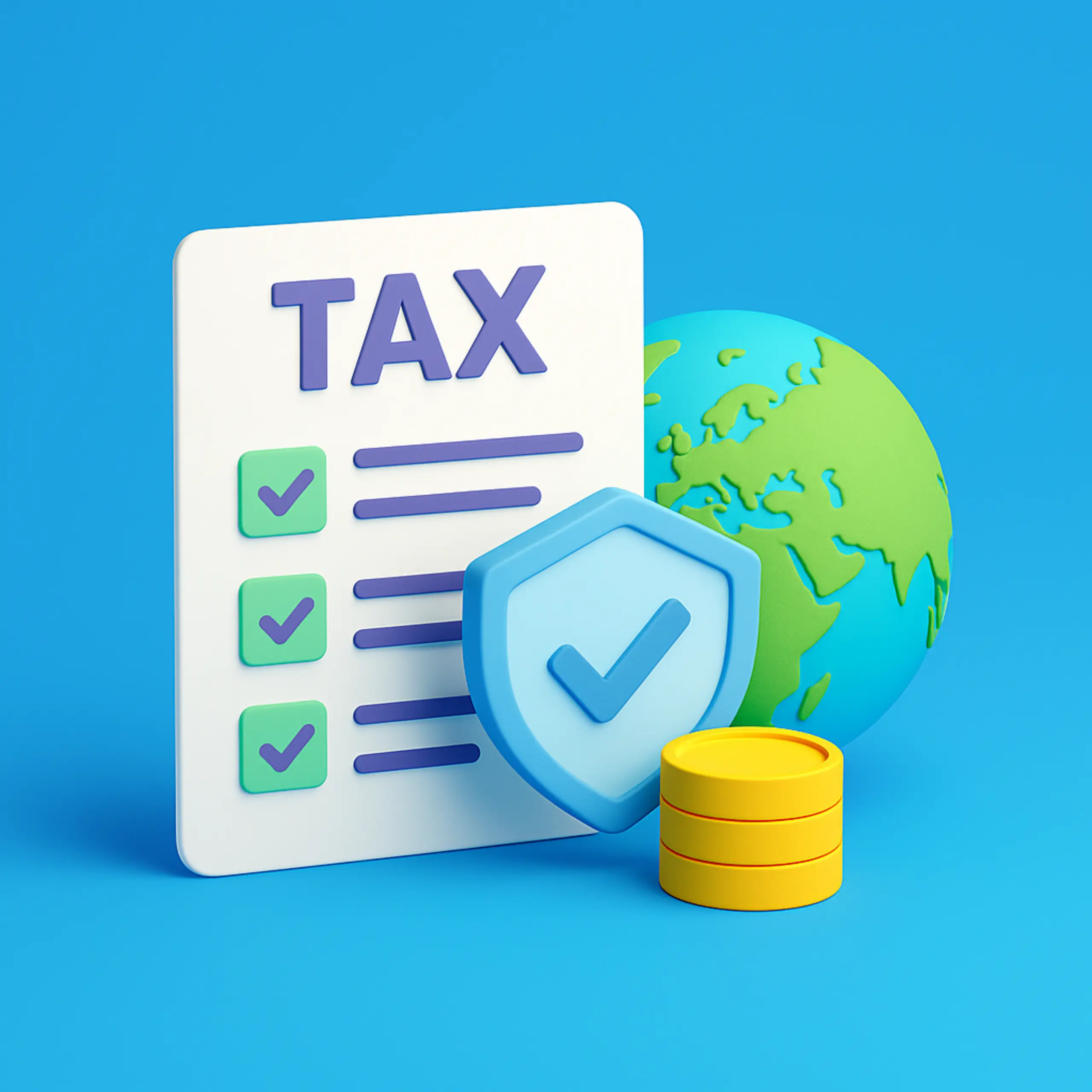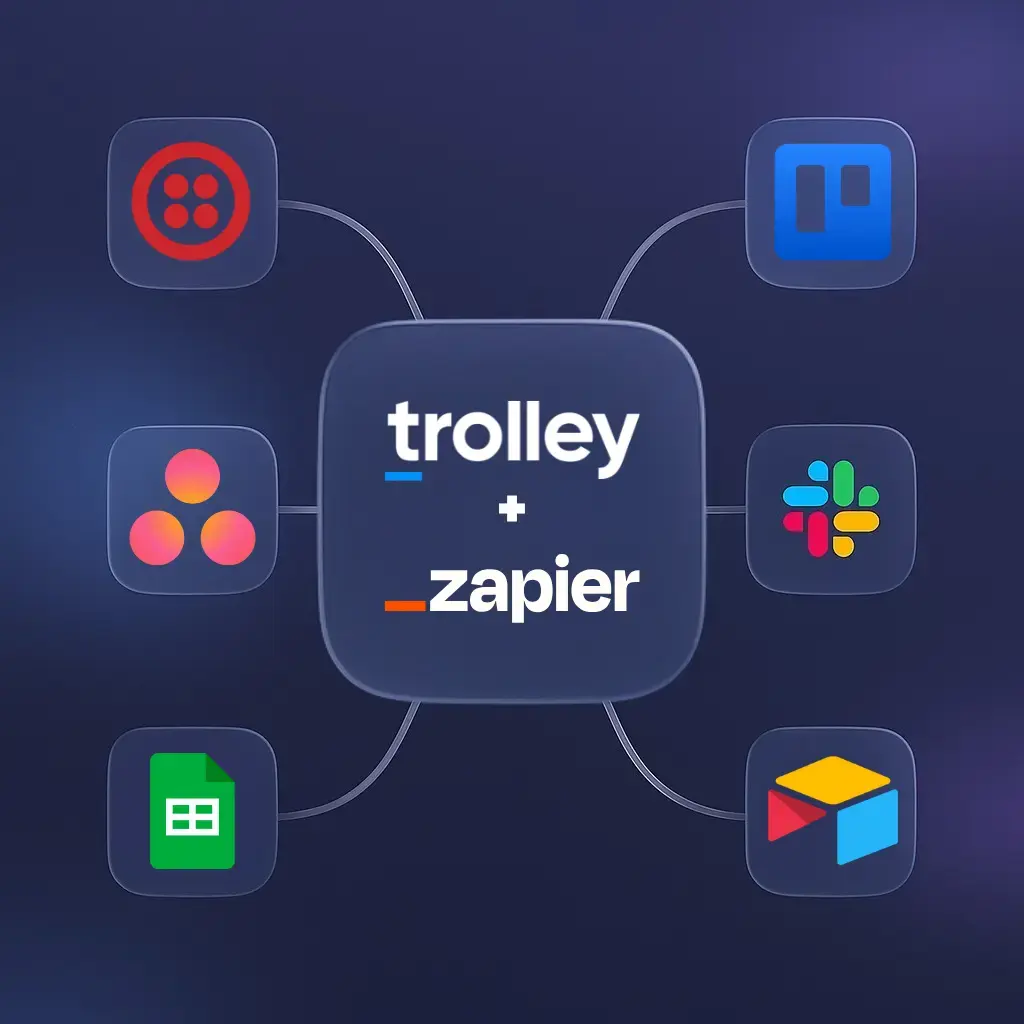Navigating international contractor tax compliance shouldn’t tie up your team or leave you facing steep fines. From properly classifying workers (employee vs. contractor) and choosing the right tax forms (W-8BEN, W-8BEN-E, W-9, 1042-S, 1099-NEC) to mastering withholding rules, secure form collection, and bullet-proof record-keeping, this guide distills the essentials into five straightforward steps. Follow the steps in this guide to keep your cross-border talent happy and your books audit-ready.
You might think working with someone halfway across the world would have a few complications, such as sending a payment to their bank in a different currency or navigating exchange rates. But the reality is that paying folks overseas involves tax forms with cryptic names, tax withholding, and compliance rules that vary by country.
“I didn’t know” won’t erase penalties, back-taxes or audits.
That being said, there are so many advantages to working with foreign contractors (access to specialized talent, cost efficiency, extended coverage, etc.) you shouldn’t be deterred from working with the best talent, regardless of borders.
This guide will walk you through the essential steps of international contractor tax compliance. You’ll learn how to classify workers correctly, which forms to use, what taxes to withhold, and how to keep proper records.
Looking for a broader perspective on global payout operations?
Download our Payout Platform Buyer’s Guide to cut through complexity with a clear, practical playbook—covering everything from evaluating platform capabilities to aligning cross-functional teams and avoiding compliance pitfalls.
What we cover
Step 1: Categorize your workers
The first step is perhaps the most important because if you get it wrong, everything that follows becomes incorrect by default. You might wrongfully classify someone as a contractor when they’re legally an employee, triggering penalties, back taxes, and legal complications. Getting it wrong can be costly.
The distinction between contractor and employee isn’t just paperwork, it’s about how you work together.
According to the IRS, there are three main ways to differentiate between an independent contractor and an employee.
We’ll look at these factors below, but note that it’s not a foolproof recipe. Sometimes, the person might fit into more than one box. Plus, countries have different thresholds for what constitutes an employee versus a contractor.
Pro Tip: Keep written agreements on file to prove this relationship. A simple contract outlining the nature of your working arrangement can save you from major headaches down the road (but does not by itself determine status).
Note: If you have a worker who resides in a country outside the United States, you must consider the employment laws of that country in addition to those of the US. For example, if a worker informs you that they live in the Netherlands, you should consult both IRS guidelines and Dutch labor laws to ensure compliance with worker classification standards in both jurisdictions.
Behavioral controls
Behavioral control looks at whether you have the right to direct and control how the worker does their job. It’s not about whether you actually exercise this control but whether you have the right to do so.
If you’re working with a contractor, you typically tell them what needs to be done but not how to do it. For example, if you hire a graphic designer to create a logo, you provide the vision and requirements. They decide which software to use when to work, and their creative process. On the flip side, having an employee gives you more control.
If you require the designer to use specific software, work during your business hours, and follow your company’s design process step-by-step, they’re more likely to be an employee.
Financial controls
Financial control examines who has control over the business aspects of the worker’s job. Things like remuneration, write-offs, and support in the form of tools and/or training.
Contractors typically invoice you for their work. In many cases, they cover their own business expenses and provide their own equipment, though that can be amended in the contract. In general, if you hire a web developer who uses their own computer, pays for their own software licenses, and sends you monthly invoices, they’re showing signs of being a contractor.
However, if you provide the computer, pay for all software, reimburse internet costs, and pay them a regular salary, you’re treating them like an employee.
Relationship controls
The type of relationship examines how you and the worker perceive your relationship. Contractors usually work on specific projects with defined end dates. They also don’t receive benefits like health insurance or paid vacation. Say you hire a marketing consultant for a three-month campaign that has a clear project scope and end date. That’s a contractor relationship.
If that same person has been working exclusively for you for two years, attends all company meetings, and you’re considering offering them health benefits, you’ve likely crossed into employee territory.
Also, if you (the company) doesn’t allow the worker to take on other projects, they are more likely to be classified as an employee.
A note on remote workers
Since the shift toward hybrid workplaces, we also need to mention the remote worker. This is often an employee who works from home but is still controlled by your company. The IRS makes it clear that working from home doesn’t automatically make someone a contractor.
Think about it through our three-factor lens. The worker in question is a remote customer service representative who:
- Logs in at specific times (behavioral control)
- Uses your company’s systems and receives a regular paycheck (financial control)
- Has been with you for years with no end date in sight and is not allowed to work on other projects outside of yours (relationship control)
More likely than not, the above is an employee. The fact that they work from their kitchen table instead of your office doesn’t change this classification.
Step 2: Learn your obligations
Your tax obligations extend far beyond paperwork and vary significantly depending on where your contractors are located and where your business operates.
The complexity multiplies when you consider that different countries have their own tax treaties, withholding requirements, and reporting deadlines. What works for reporting for contractors in Canada might be completely different for one in India. This is where many businesses stumble, assuming that one approach fits all international payments.
A bit about tax withholding
Withholding taxes involves deducting a set percentage from payments and sending it directly to tax authorities. This ensures taxes are paid upfront, especially critical for international payments
Tax withholding for foreign contractors depends on where the work is performed and applicable tax treaties. In general, if the contractor works entirely outside the US, there’s usually no need to withhold or report payments to the IRS.
Check for applicable tax treaties
You do this to reduce withholding or eliminate it entirely. The United States has income‑tax treaties with over 60 countries that can significantly impact your withholding obligations. These agreements prevent double taxation and often reduce the standard 30% withholding rate on certain types of income.
Keep in mind, however, that treaty benefits can become more complex when a foreign worker actually travels into the US to perform services. In those cases:
- Other rules may override the treaty: If the individual’s work in the US creates effectively connected income (ECI), you must report that on Form W‑8ECI rather than rely solely on a treaty exemption.
- Form 8233 for personal services: Treaty exemptions for nonresident individuals providing US‑source personal services must be claimed on IRS Form 8233. After you—or the worker—file Form 8233, you must wait 10 days before applying the reduced withholding rate.
For example, under the US‑UK treaty certain business‑service payments may be exempt—but only so long as those services aren’t performed physically in the US. Similarly, the US‑Canada treaty can eliminate withholding on many types of business income, unless the work itself takes place on US soil and triggers ECI or personal‑service rules.
How to collect tax forms
One of the main challenges when working with international contractors is having to chase them down to get their forms. If they become unresponsive right around tax season, you could find yourself in hot water.
To make things easier for you, you should start collecting tax forms before you make your first payment. Make it part of your onboarding process, just like you’d collect a signed contract or banking information.
Use secure methods to collect these forms since they contain sensitive information. Encrypted email, secure file transfer services, or dedicated onboarding platforms work well. Follow up promptly if forms are incomplete or expired.
Tax compliance is just one part of the global payouts puzzle. Global Payouts Platforms Explained: Challenges, Solutions & Best Practices explains how compliance fits into the bigger picture.
Step 3: Identify the relevant IRS tax forms
Next is everyone’s favorite part: the mountain of paperwork.
Although it may not be the most fun thing to do, understanding tax forms is crucial for avoiding costly mistakes. The good news? Once you know which forms to use and when the process becomes much more manageable.
There are countless forms available, some for very specific use cases. We’ll just focus on the most common ones you’ll encounter when working with international contractors.
Classify correctly and request an official ruling
Before collecting any tax forms, make sure you’ve classified your payee correctly as an employee or an independent contractor.
Sometimes, the line between contractor and employee is so blurry that you need an official ruling.
Form SS-8 is like asking a referee to make a call in a close game. You provide detailed information about the working relationship, and the IRS reviews it and tells you whether the person is an employee or contractor under US tax classification). The process can take six months or more, so it’s not a quick fix. But if you’re facing a situation where misclassification could be costly, it’s worth the wait for peace of mind.
It’s important to remember that any IRS determination applies strictly to US tax classifications. If your payee resides outside the US, you’ll need separate guidance from that country’s tax authorities, you can’t rely on an IRS ruling alone to avoid misclassification risks abroad.
Example: Commonly US citizens relocate to Europe, often due to a spouse’s job. These “accompanying” spouses get permission to work remotely for their employers back in the USA, mistakenly assuming they can simply switch these employees to 1099 contractors once abroad. However, if local tax authorities, like the Dutch Belastingdienst, investigate and find the person is effectively still an employee (e.g., invoicing only one company regularly), your business could face significant issues. These might include allegations of illegally employing someone without proper local payroll registration, failure to pay mandated sick leave, or neglecting required vacation allowances.
Collect the right residency & information forms
Before you can disburse any payments, you need to establish each payee’s tax status and gather the documentation required for annual reporting. This step ensures you withhold the correct amount of tax (if any), remain compliant with IRS rules, and avoid surprises at year-end.
Depending on whether your contractor is a foreign person or a US person—and the specific circumstances of their services—you’ll collect one or more of the following forms:
- Foreign Contractors:
- Individuals: W-8BEN (general cases), Form 8233 (for performing services inside of the US), or W-8ECI (effectively connected income)
- Entities: W-8BEN-E (general cases) or W-8ECI (effectively connected income)
- US Contractors:
- W-9
Below, you’ll find detailed guidance on each form, including when and how to use them, key completion tips, and recommendations for managing your documentation.
W-8BEN & W-8BEN-E
The W-8BEN is your primary form for individual foreign contractors, while the W-8BEN-E applies to foreign entities. These forms certify that your contractor may qualify for reduced withholding rates if they aren’t US persons.
Think of the W-8BEN like a passport for tax purposes—just as a passport confirms citizenship for international travel, this form confirms tax residency for payment processing. Our blog has more information and a detailed W-8BEN form guide.
These forms remain valid for three years from the date signed, then they expire. If you don’t have a valid W-8BEN or W-8BEN-E on file, you’ll need to withhold income tax at the default rate of 30%.
When the W-8BEN isn’t enough: Form 8233 and W-8ECI
It’s critical to understand when a W-8BEN isn’t sufficient.
Specifically, if a foreign individual performs services within the United States, a W-8BEN form alone won’t reduce withholding to 0%. Instead, the contractor must complete IRS Form 8233, which formally claims a tax treaty exemption.
Additionally, if foreign entities perform services within the US and generate effectively connected income (ECI), they may need to provide appropriate documentation W-8ECI to avoid incorrect withholding.
Understanding Form 8233
Form 8233 isn’t a quick fix, it requires detailed entries about expected income throughout the year. After receiving this form, the withholding agent (your company) must review, sign, and send it to the IRS. Only after waiting 10 days following submission can you apply the reduced withholding rate.
Because these situations can become complex quickly, we recommend reviewing this detailed guide on navigating IRS withholding and reporting obligations.
W-9
For your US-based contractors, you’ll collect IRS Form W-9 to capture the legal name, address, and Taxpayer Identification Number (TIN) you’ll need to prepare Form 1099-NEC during annual reporting.
You don’t send the W-9 itself to the IRS, it stays on file with your records, but it provides the data required to accurately report non-employee compensation.
File annual information returns
Once you’ve collected the correct residency forms (W-8BEN/E, W-9, etc) and completed your payments, the next step is to report the total of those transactions to the IRS for each of your contractors.
Annual information returns summarize what you’ve paid and any taxes withheld, keeping both your contractors and the IRS in the loop. Depending on whether your contractor is a foreign person or a US person, you’ll file one of two forms:
- Foreign contractors (W-8 / 8233): 1042 and 1042-S
- US contractors (W-9): 1099-NEC (or some other options)
Below, we break down when and how to complete each.
1042 & 1042-S
Form 1042 is an annual return you file to report payments made to foreign persons and any tax withheld. You must file Form 1042-S (like a W-2 for foreign contractors) if you’ve made payments of $1 or more to a foreign contractor. Each foreign contractor receives a copy of Form 1042-S, detailing their income and any tax withheld.
The 1042-S forms go to individual contractors, while Form 1042 summarizes everything for the IRS. There’s also a Form 1042-T, which is the transmittal form if you choose to file paper forms. However, we highly recommend filing electronically—more on this later.
1099-NEC
The 1099-NEC (Non-Employee Compensation) is what you file for US-based independent contractors. This replaced the old system where contractor payments were reported on the 1099-MISC. The change happened in 2020, so if you’re using old guides, it’s time to make the switch. Note that the 1099-MISC wasn’t retired completely but is now used for other miscellaneous purposes like rent or attorney payments.
File a 1099-NEC if the contractor was based in the United States and was paid more than $600 during the tax year. You’ll also need to file a 1099-NEC if any tax withholding was taken, even if total payments were below $600. This form reports the total amount you paid the contractor, and both you and the contractor will receive copies.
When filing the 1099-NEC, you’ll also need to submit IRS Form 945 to report any federal income tax withheld from these contractor payments.
Note: With the recent passage of the OBBB Act in the US, the threshold for reporting payments on Form 1099-NEC will rise to $2,000 starting in 2026 and will be indexed for inflation in subsequent years.
Step 4: Record everything
One big mistake companies make is filing their taxes and then trying to forget about them by shoving paperwork into a dusty filing cabinet. This approach might work until you face an audit, then you’ll wish you had better record-keeping systems.
You should keep every form and record for at least 3-6 years, depending on if any discrepancies are found. To be on the safe side, we recommend keeping everything for 6 years.
Here are the best practices for storing essential documents:
- Go digital: Skip the scanning and do electronic form journeys instead. You’ll eliminate lots of problems that come with manual forms.
- Organize clearly: Sort by contractor name and tax year.
- Track payments: Save all invoices, payment confirmations, and bank records.
- Archive communications: Keep emails clarifying contractor status.
- Set reminders: Note form expirations and filing deadlines.
- Secure data: Encrypt sensitive tax information.
- Automate: Leverage software (like Trolley) to streamline record management.
Step 5: File on time
Missing tax deadlines is costly. Late filings for information returns attract penalties ranging from $60 to $630 per form, depending on how late you file. Additionally, if you fail to deposit withheld taxes on time, you’ll face interest charges (around 0.5% per month) on unpaid amounts until they’re fully paid. There is also a late deposit penalty, in addition to the interest charges. Daily late deposit penalties can be 2-15% of the amount undeposited until it is deposited.
Penalties and interest can accumulate quickly, so timely filing and payment are critical.
If you anticipate delays, proactively request filing extensions, before the original due date via Form 8809. Extensions give you more time to file forms but not more time to pay taxes owed.
Filing electronically makes your life easier. E-filing is faster and more accurate, and it provides immediate confirmation that your forms were received. The IRS even requires electronic filing if you’re submitting more than 10 forms.
Bonus step: Do better next year with the right tools
Tax compliance is only one part of building a scalable, efficient payout operation. If you want to get ahead of next year’s reporting season, now is the time to strengthen your entire filing strategy through better payouts.
Our Payout Platform Buyer’s Guide walks you through the bigger picture:
- How to evaluate global payout platforms and their compliance capabilities
- What to look for when scaling from a handful of contractors to thousands
- Best practices for reducing cross-border payment costs and avoiding compliance pitfalls
Download the guide today and set your team up with a clear, practical roadmap for global contractor payments and EoY compliance.
Legal disclaimer
The information in this article is provided for educational purposes and does not constitute legal, tax, or compliance advice. You should consult qualified professionals familiar with your specific circumstances before making decisions about worker classification, tax form collection, withholding, or reporting obligations (including 1099‑NEC, 1042‑S, W‑8BEN/E, Form 8233, and related IRS regulations).
Trolley’s platform automates form collection, withholding, and reporting workflows but does not replace professional guidance or guarantee compliance. Please work with your legal, finance, or compliance advisors to verify that your processes—and any use of Trolley—meet all applicable requirements. For questions about Trolley features and how they support your compliance needs, contact our support team.







